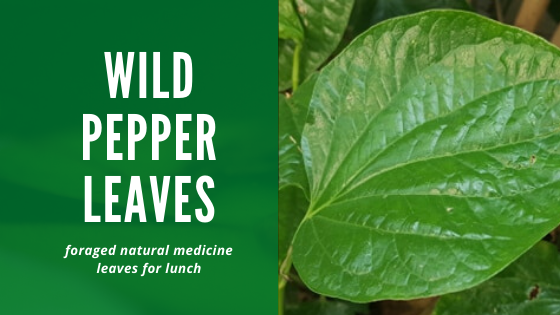
Foraged and wild tend to bring on images of mosquito-laden jungles in the Amazon Rainforest or the steep mountains of Eastern Burma. In my case, this week, it meant nothing more exotic than staggering out the back door to hang out laundry and noticing one of the plants was suddenly enjoying a growth spurt.
I was squatting, Asian style, peering at it up close (big bundle of laundry still under my arm) when our housemaid stuck her head out, saw what I was doing and called out, "ใบพลู" - which transliterates as "Bai Phluu" - the betel leaf. I was dubious - although the leaves are almost identical, the plant was too low, more of a creeper than a bush and smelled different.
Laundry forgotten, I was off into the delightful world of botanical identification. 10 mins later, 12 websites across 3 languages and I let out my triumphant Got it!!.
Piper sarmentosum. Common wild pepper. Common in Asia, anyway. In Thai it's called "Bai Cha Phluu", hence the confusion.
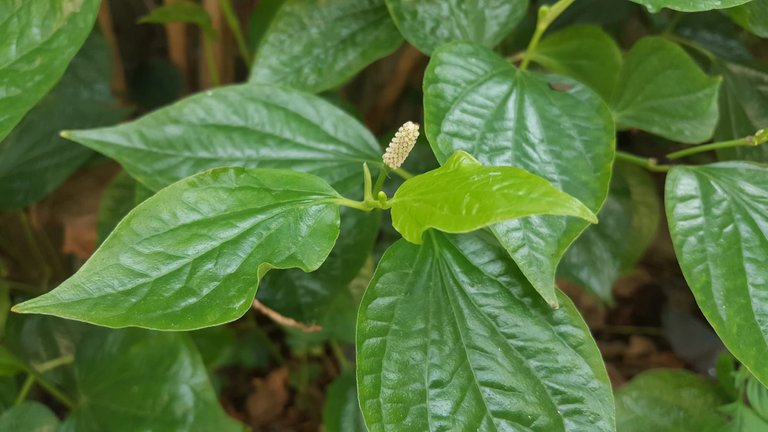
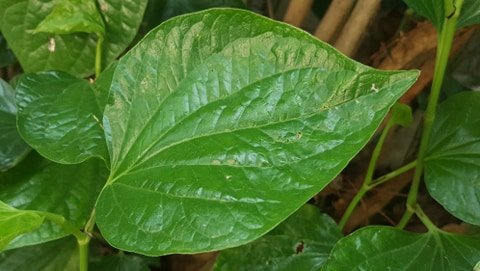
It grows low to the ground, likes to have water and isn't the tidiest of garden friends.
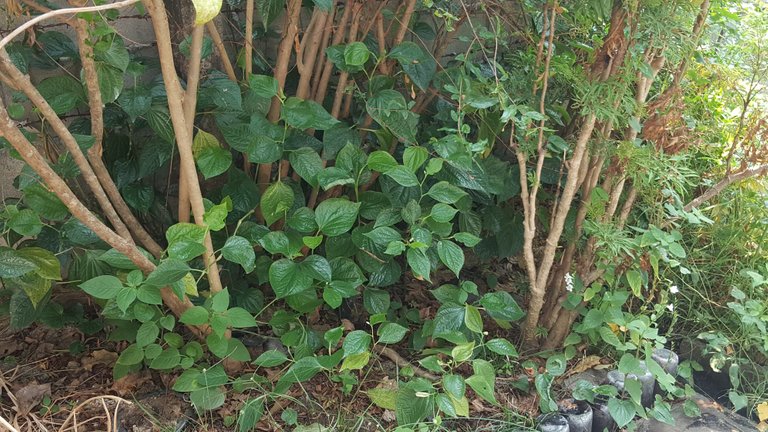
How is it mostly used? I nearly squealed when I discovered that these are the PROPER leaves to make my fav little Vietnamese rolls with!! Bo Nuong La Lot.
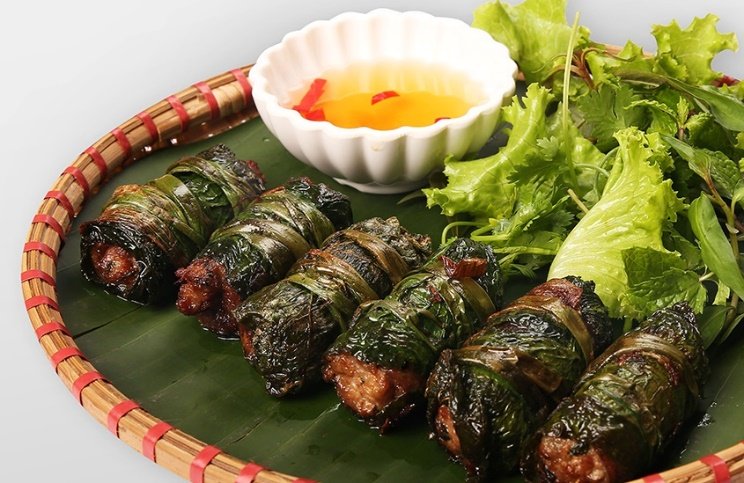 Image Credit: dvpmarket.com
Image Credit: dvpmarket.comHaving no meat whatsoever in the house (we eat it rarely) and no desire to go shopping during home quarantine, we decided instead to make a simple salad with the fresh leaves for lunch instead.
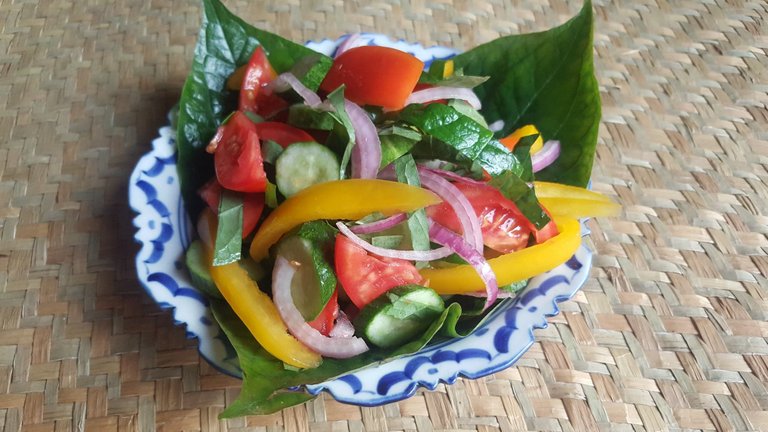
How does it taste? Tangy and spicy with (as you'd expect) an aftertaste of fresh black pepper. A perfect balance to cool cucumbers, tomatoes and fresh capsicum. Nothing more needed than a sprinkle of mineral salt, a squeeze of lime juice and a tiny drizzle of cold pressed black sesame oil.
Foraged straight from the wilds of my unkempt Thai garden.
The leaves, specifically are carminative, meaning they prevent the build up of gas in the digestive tract. The whole plant is well documented to be anodyne, meaning it relieves pain. Eating the leaves regularly reduces inflammation and helps expel mucus from the lungs. In Ayurveda it's eaten to relieve headaches, to help clear problem skin, and for rheumatism, toothache and diarrhea. Basically, if you are alive and breathing, there is probably at least one reason for you to be eating this amazing leaf.
A word on propagation. It likes to wander low, beneath other plants. Ours is sprawling under the pomegranate and the struggling noni. It likes water, and hence its growth spurt, since we had the first sprinklings of rain this week heralding the return of the monsoonal rainy season. If you actually want pepper corns, you need both a male and a female plant. The flowers on our suggest we have only a male plant. The prime time to harvest leaves is when the plant is showing young flowers.
The other common Thai ways to eat Bai Chaa Phluu? In southern Thailand it's commonly added to crab curry, as a green vegetable. So next time we're making a vegetarian coconut milk based curry, we're going to throw some wild pepper leaves in, wilted at the end of the cooking process, just before serving.
Feeling enriched, nourished and very well fed after foraging in my Thai garden. BlissednBlessed.


Join The Best Natural Health Community on Hive

Very interesting! Thanks for sharing.
I love the way you can eat almost everything in old Thai gardens, and almost everything is natural medicine. Our old Thai landlady's father planted this garden almost 100 years ago, and its full of amazing plants and herbs.
Oh! You have to show us more on those herbal or medicinal plants!! I gave to plant more medicinal plants and herbs.
Absolutely I promise I will!! 😆
And me, midway through a post about foraged things for salad.....
I loved your foraging post. ❤️🙏
These leaf named 'Ranub" in Aceh, and in our country Indonesia its called 'Daun Sirih"
It was be natural medicine for long time to our community, you know what? these pandemic covid-19, in our village used these leaves to washing their hand. good for antiseptic :)
Now I DIDN'T know you can use this plant for antiseptic!! Off to read more....!! Thank you. 😀
Really interesting to read. I live gardening
I live it. And I love it. 😂
I know about this leaves but I never know that we can eat also. thank you is new knowledge for me.
Always happy to share simple, useful and healthy information. Building a knowledge base is a big part of what @naturalmedicine is about. Glad you found it useful.
A huge hug from @amico! 🤗
@porters here on behalf of @NaturalMedicine – Always wonderful to find some wild edibles right in your yard! Especially when they are so beneficial like the common wild pepper!
, which you can read about here. There's 100 HIVE on offer & lots of LOTUS to win!